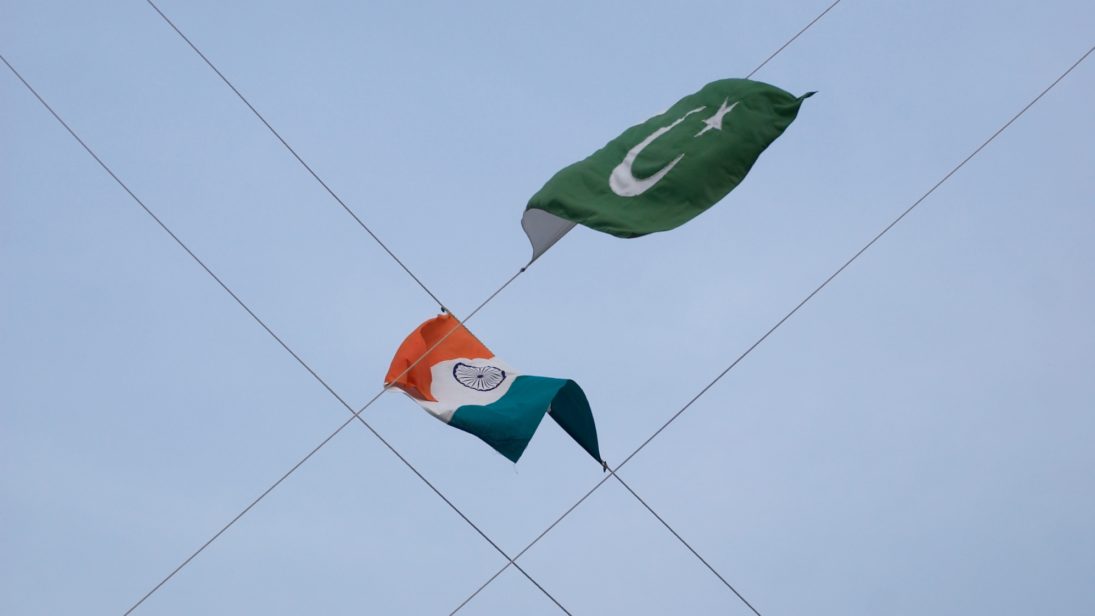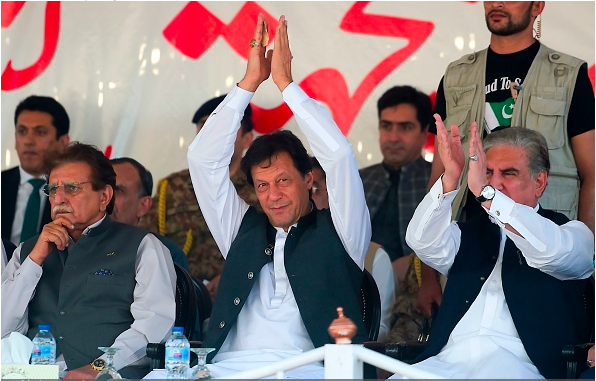
India-Pakistan relations have experienced a souring over the past several years, and 2019 has been no exception. Indian Prime Minister Narendra Modi’s election victory in 2014 had spurred two years of engagement: former Pakistani Prime Minister Nawaz Sharif attended Modi’s inauguration, and PM Modi visited Lahore in December 2015. By 2016, however, and extending into 2019, protests in Kashmir, militant-group-claimed terrorist attacks (Pathankot, Uri and Pulwama), and subsequent responses (including air strikes at Balakot in February 2019) have led to a breakdown in Indo-Pak relations.
Within this background, managing an increasingly tense relationship with India presented a challenge to Prime Minister Imran Khan’s Pakistan Tehrik-i-Insaaf (PTI), which formed a government after the Pakistan Muslim League-Nawaz (PML-N) lost the July 2018 election. Both parties had initially sought constructive engagement with India, but the PTI has taken a more nationalist turn. Meanwhile, Indian Prime Minister Modi’s Bharatiya Janata Party (BJP) has, in its second term (beginning in May 2019), doubled down on a hawkish policy towards Pakistan and Kashmir, following through on election manifesto promises that helped secure the party a second term. Nationalism driving both the PTI and the BJP primed the Indo-Pak relationship for confrontation. This stalemate is likely to persist in the future as both sides are prioritizing domestic audience interests and resorting to nationalist rhetoric over meaningful engagement.
Heading for Confrontation: PTI vs BJP?
Nationalism driving both the PTI and the BJP primed the Indo-Pak relationship for confrontation. This stalemate is likely to persist in the future as both sides are prioritizing domestic audience interests and resorting to nationalist rhetoric over meaningful engagement.
Before delving into the specific differences between the old PML-N and new PTI governments in Pakistan and comparing Modi 1.0 to 2.0, it is important to examine the character of nationalist rhetoric on both sides. The BJP and the PTI are popular-nationalist parties. Both parties’ leaders have a preference for tough posturing amid crises, and both have called for hardline foreign policy stances over the course of the last year. Khan, particularly, had criticized the India-policy of Nawaz Sharif, his political opponent. Supporters of the PTI hurled the phrase Modi ka yar, or friend of Modi, at PM Sharif and his party for pursuing engagement with Modi’s India. Modi is also widely considered in Pakistan to have adopted a get-tough-with-Pakistan policy. Although Khan reached out to his Indian counterpart on several occasions after assuming office, the Pakistani PM was set to adopt a more muscular India policy from the get-go, put on display during February crisis, where nationalist sentiments contributed to the PTI government’s crisis response.
Across the border, in the lead-up to the 2014 elections, the BJP had relentlessly criticized the Congress Party for engaging with Pakistan despite incidences of terrorism attributed to militant groups operating on Pakistani soil – with Modi claiming a “zero tolerance” policy towards terrorism. Thus, during its first term, the BJP set counterterrorism preconditions that its neighbor would have to meet before India agreed to any dialogue. The PML-N government pursued engagement, but deadlock over preconditions, mutual suspicions, and attacks hampered every attempt at resuming bilateral dialogue. Escalation reached a new level in February 2019 following a Jaish-e-Mohammed-claimed attack on an Indian military camp at Pulwama. After two weeks of escalating tensions, the Modi government responded with an airstrike in the town of Balakot in the Khyber Pakhtunkhwa province of Pakistan. As the Modi government was gearing up for an election campaign, the strikes later proved to boost his domestic support and frame the BJP anti-Pakistan rhetoric of his election campaign.

Comparing Modi 2.0 and the PTI:
Examining shifting governments in India and Pakistan in a comparative perspective provides evidence of this move towards hyper-nationalism. The PTI’s newly assertive India policy stems in part with its dissatisfaction with the policies of its predecessor. Former Prime Minister Nawaz Sharif had come into power on the election manifesto of resolving differences through peaceful negotiations. During its first two years (2013-15), the PML-N government engaged with India through high-level visits. In 2016, the Pathankot attack and rising tensions in Kashmir derailed the engagement process. As New Delhi insisted that Pakistan fulfill counterterrorism preconditions before resuming dialogue, the PML-N gradually became more aggressive in its posture towards India. When the PTI came to power in 2018, Islamabad and New Delhi were already at loggerheads.
The PTI government adopted a two-prong stance on India at the beginning of its time in government. Khan called for engagement at the outset of his term and reached out to Modi. Even after the Balakot strikes, Khan and the PTI government believed that the BJP’s hardline policy towards Pakistan would subside after the elections in May, even remarking that a BJP victory could facilitate renewed negotiations. Post-elections, however, Islamabad encountered an even more bellicose Modi 2.0. Resultantly, the PTI government, responding to audience pressures and reactions to the sensitive issue of Kashmir, dug into its nationalist posture. As Pakistan launched a diplomatic offensive against India post August 5, Khan directly attacked Modi on Twitter for “fascist” policies.
Although Modi had shown a greater willingness to engage with the PML-N throughout his initial years in office, in the prelude to the 2019 elections the Indian PM acted according to a hardline policy towards the new PTI government. During his first term, Modi expended political capital on engagement with Pakistan, first by inviting Sharif to New Delhi in May 2014 for attending his swearing-in ceremony and then by visiting Pakistan in December, 2015. His visit to Lahore was a first visit by an Indian Prime Minister in a decade. After the events of 2016, however, the Modi-led BJP flouted nationalism, turning back on its former overtures of diplomatic engagement.
At the United Nations General Assembly in September 2018, the Modi government refused to resume dialogue with PM Khan’s government. And on the broader diplomatic circuit, India consistently brought up Pakistan’s involvement in cross-border terrorism with major countries, blaming Islamabad for “terrorist activities via J&K and Punjab.” The BJP leadership also used the Pulwama attack and subsequent Balakot strikes to shape its sharply anti-Pakistan messaging during the election campaign. Post elections, Modi 2.0 doubled down on this stance, and has refused engagement despite exchanging letters with PM Khan post electoral victory. India’s August 5 policy measures on Kashmir drastically intensified tensions with Pakistan. These measures brought Kashmir to the forefront of India-Pakistan relations in a way not experienced in a generation.
Currently, two nationalistic parties are at the helm in Pakistan and India. The postures adopted by Islamabad and New Delhi appear to be inflexible. Growing nationalism in both countries led to domestic-audience buy-in of hawkish policies.
What’s Next?
Currently, two nationalistic parties are at the helm in Pakistan and India. This directly translates into a confrontational relationship, as both governments have less space, due to their domestic constraints, for achieving compromise. Strong words on both sides post August 5, and diplomatic chills over the past year, obviate space for reviewing their respective strategies. The decision to revoke Kashmir’s autonomous status has proven popular across India, and Indian ministers have even called for reclaiming Pakistan-administered Kashmir.
The postures adopted by Islamabad and New Delhi appear to be inflexible. Growing nationalism in both countries led to domestic-audience buy-in of hawkish policies. Both sides are ready for a long-term confrontation and are refusing to make concessions. In part, pro-government domestic constituencies constrain the amount of space available for making overtures in favor of dialogue. The BJP government cannot afford to make unilateral concessions unless Pakistan meets certain preconditions on counterterrorism. Meanwhile, the PTI government refuses to soften its India policy unless India lifts its communication and security lockdown on Kashmir and reviews its posture therein. Resultantly, Pakistan-India relations are likely to remain deadlocked in the immediate future.
***
Image 1: Wikimedia Commons
Image 2: Aamir Qureshi/AFP via Getty Images


